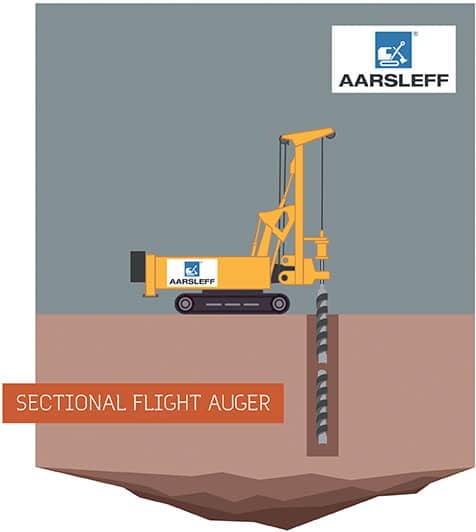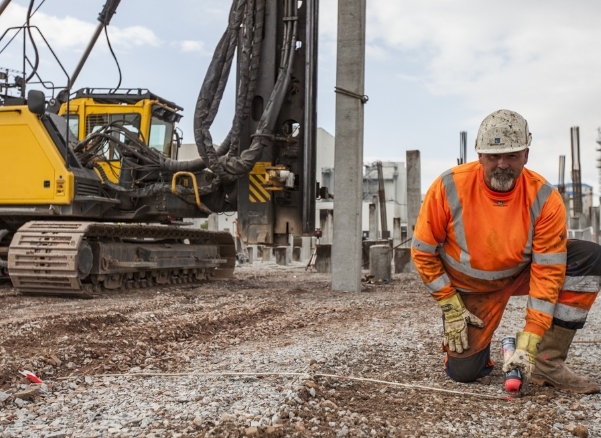Top 10 Advantages of Mini Piling
Categories:
Company NewsMini Piling – Top 10 Advantages!
Within ground engineering projects, limited space or restricted access to the site can pose issues, especially when transporting vehicles, moving large equipment and delivering material. When this is the case, a good foundation solution to choose is ‘Mini Piling’.
Mini piling is most suited for restrictive or low headroom projects, making it ideal for works inside buildings or on sites with restrictive access. With various applications, mini piles can be used as replacement of traditional footings for new build houses and factories when ground conditions become unfavourable. Mini piles can also be used to strengthen existing structures such as bridges, retaining walls, floor slabs, or used as an alternative to traditional underpinning.

Check out the Top Ten advantages of mini piling:
- Work extremely well both in tension and compression
- Speedy install depending on ground conditions
- Mini piling systems enable builders to create extensions to homes in tight spaces that would have been out of bounds
- Mini piling causes minimal disturbance/vibration to adjacent structures during the installation
- With suitable ground conditions they can be installed cost effectively, with high load capacities
- Greater depths are reached with ease
- They can be structurally incorporated into existing foundation systems
- Can work within low headroom in restricted working conditions
- A good solution for sites with environmental sensitivity or close to buildings
- Mini piles use less concrete and steel than other piling systems, so reducing the foundation carbon footprint
What methods of Mini Piling are there?
Aarsleff Ground Engineering can install mini piles via different techniques dependent on the conditions and requirements of the project.
Sectional Flight Auger (SFA) piling is used in low head room or very restricted job sites where using a CFA rig is not possible. The piles are formed with the use of sectional lengths of hollow stem continuous flight auger. SFA is typically considered for use in all unobstructed ground conditions including made up ground and ground with high water tables. Due to the size of the rigs used they are ideally suited where there is restricted access or low working height.
Augered Piling is generally used in cohesive soils where segmental augers are rotated into the ground and the soil being penetrated is flighted to the surface by the augers. Where the ground is unstable, temporary casings can be installed in conjunction with the augers to progress the bore. When the desired pile length has been achieved, the steel reinforcement is placed, and the pile bore is filled with either concrete or grout. This technique is particularly time efficient and cost effective where open boring is possible.
Mini Bottom-Driven Piling is efficient and suitable for most ground conditions. A closed-ended thin walled steel tube is driven in lengths of between 2m and 6m using an internal drop hammer on to a dry concrete plug. The tubes are joined by a full but non-structural fillet weld as the installation proceeds until the pile is driven to a predetermined set or design length criteria. Once the required depth is reached the tube is filled with high slump concrete or grout and a single bar or cage is inserted.
What equipment is there?
Aarsleff Ground Engineering has a variety of rigs in its fleet to be able to carry out mini piling projects. These rigs are smaller in size compared to the driven precast piling rigs providing more flexibility on getting into restricted access sites.
For example, Aarsleff’s Mait Baby Drill can get in areas where it wouldn’t be possible for a large machine to enter, such as inside elevator shafts, inside buildings, under low head roof and low headroom conditions. Aarsleff has employed the Baby Rig in many of our ground engineering projects, particularly when working on railway projects where space is limited. In fact, the rig is so compact it can enter through a 3.3ft wide door.
Aarsleff are backed by a firm of geotechnical consultants who provide a fully insured mini pile design service. Rest assured that Aarsleff will provide you with the most competitive quote for mini piles which fits your project and budget.
For more information about Aarsleff Ground Engineering or to send in your enquiry, call 01636 611140 and speak to a member of our expert team today, or drop us an email
The Latest. News, podcasts & projects






